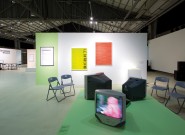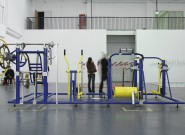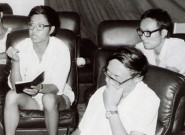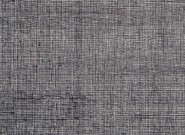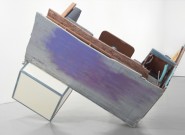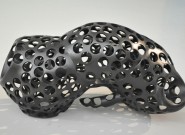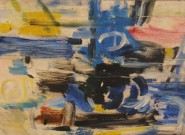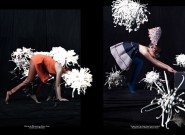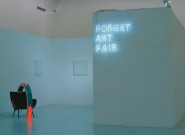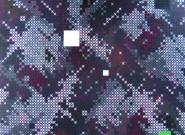Although the majority of the research that culminated in the “Little Movements” exhibition revolves around Chinese contemporary art, the three young researchers-cum-curators—Liu Ding, Carol Yinghua Lu, and Su Wei—do not attempt to uncover or define any so-called special Chinese characteristics in their subjects. Instead, they opt to adopt a global view of art events, a…
Read MoreFor its fifth installment, the Chengdu Biennale was transformed from a privately funded exhibition into a state-run cultural event. In the eyes of many, this example of “re-nationalization” hints at an official recognition of the value of events of this kind; to adopt the vocabulary of business marketing, the Chengdu Biennale as we know it…
Read MoreThe “Little Movements” research— launched by Liu Ding, Carol Yinghua Lu, and Su Wei— takes Wang Guangyi’s verbal recollection of the seminal 1986 Zhuhai Symposium as a case study. The researchers claim that the chief aim of “Little Movements” is to emphasize the self-construction of dominant trends within contemporary art. Using this stated aim as…
Read MorePerhaps, ten or twenty years from now, we will see the abstractionism of China today as something akin to American Abstract Expressionism. After the Second World War, the United States, through Abstract Expressionism, completely remolded traditional European expressionism and thereby affirmed its own status as a cultural center. In this sense, today’s Chinese abstraction serves…
Read More1. SARAH BRAMAN At the age of 43, Sarah Braman has finally made her mark on the international contemporary art world. A long-time presence in the downtown Manhattan scene, Braman co-owns the well-respected Lower East Side gallery CANADA with her husband Phil Grauer, in addition to making sculpture. Supporting her two children, artistic practice, and…
Read MoreIn September 2011, the fourth Guangzhou Triennial opened as scheduled—amidst considerable doubt, followed by responses increasingly bleak in their disappointment. First in 2002 with Wu Hung’s conception for the first triennial—“Reinterpretation: A Decade of Experimental Chinese Art (1990-2000)”—next in 2005 with Hou Hanru’s “Beyond: An Extraordinary Space of Experimentation for Modernization”—and again with Wang Huangsheng…
Read MoreThe subtitle of the inaugural CAFAM Biennale, “Super-Organism,” is “Research and Experiment from a Specific View.” This “non-biennial,” established within a biennial framework, brings an abstract theme to a specific space through the arrangement of works and coordination of related activities; it also summarily seeks theoretical propulsion through texts including a catalog, a forum transcript,…
Read MoreShanghai has been a model region for the practice of abstract art in contemporary China. Over the past 10 years, amidst the overall pattern of Chinese contemporary art, abstract art has come to be one of Shanghai’s emblematic features, one of its stronger cultural calling cards. TRACING BACK IN HISTORY SINCE THE MING and Qing,…
Read MoreARTIST: Liu Ding PHOTOGRAPHY: Chai Lizeng MAKE-UP: Daniel Zhang (Tony Studio) HAIR: He Zhiguo (Tony Studio, Sebastian) STYLIST ASSISTANT: Chiu PRODUCER: Aimee Lin PRODUCTION ASSISTANT: Bian Jiaojiao MODEL: Anna
Read MoreFORGET ART IS an independent organization established in 2009 by the artist Ma Yongfeng. Doubling as a loosely defined creative collective, it came to notice after engineering the project “Location: Dragon Fountain Bathhouse” in September 2010. For this project, participating artists adopted a strategy of “microintervention”— launching artfully insinuated threats and acts of resistance against…
Read More“Abstract art” in China has reached a new high-water mark since its popularity during the ’85 New Wave. This revival can be recognized in the growing and increasingly active groups of young artists that practice abstraction in their works, with each developing in unique directions. Correspondingly, exhibitions on “abstraction” have grown in number— as have…
Read MoreUnder the present conditions in China, if a more thorough analysis of the concept of abstraction is not carried out, then it will gain a kind of cognitive inertia and mutate into a new popular symbol. In fact, we are already witnessing this risk, particularly in this moment of large-scale marketing in the art world……
Read More
